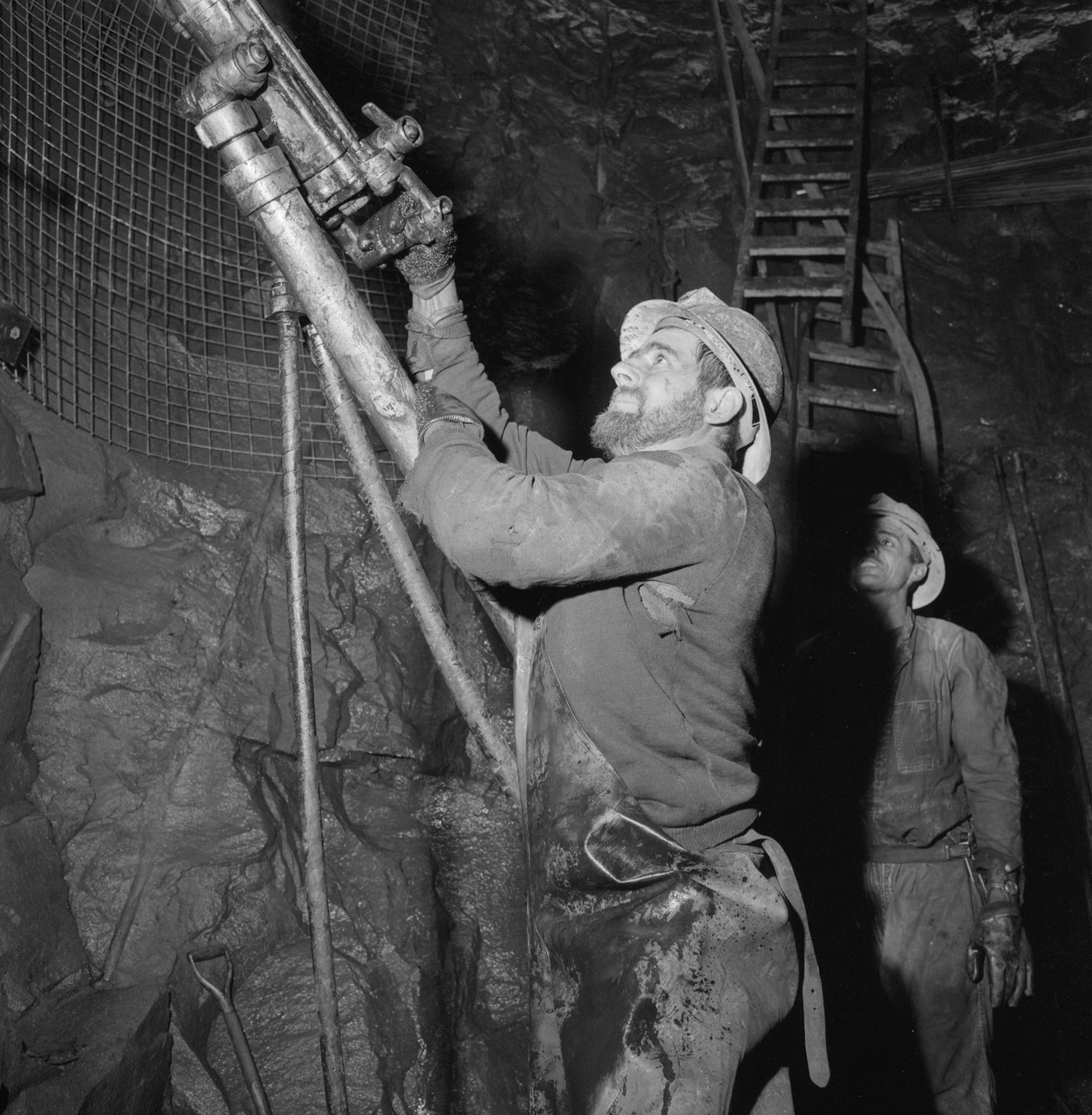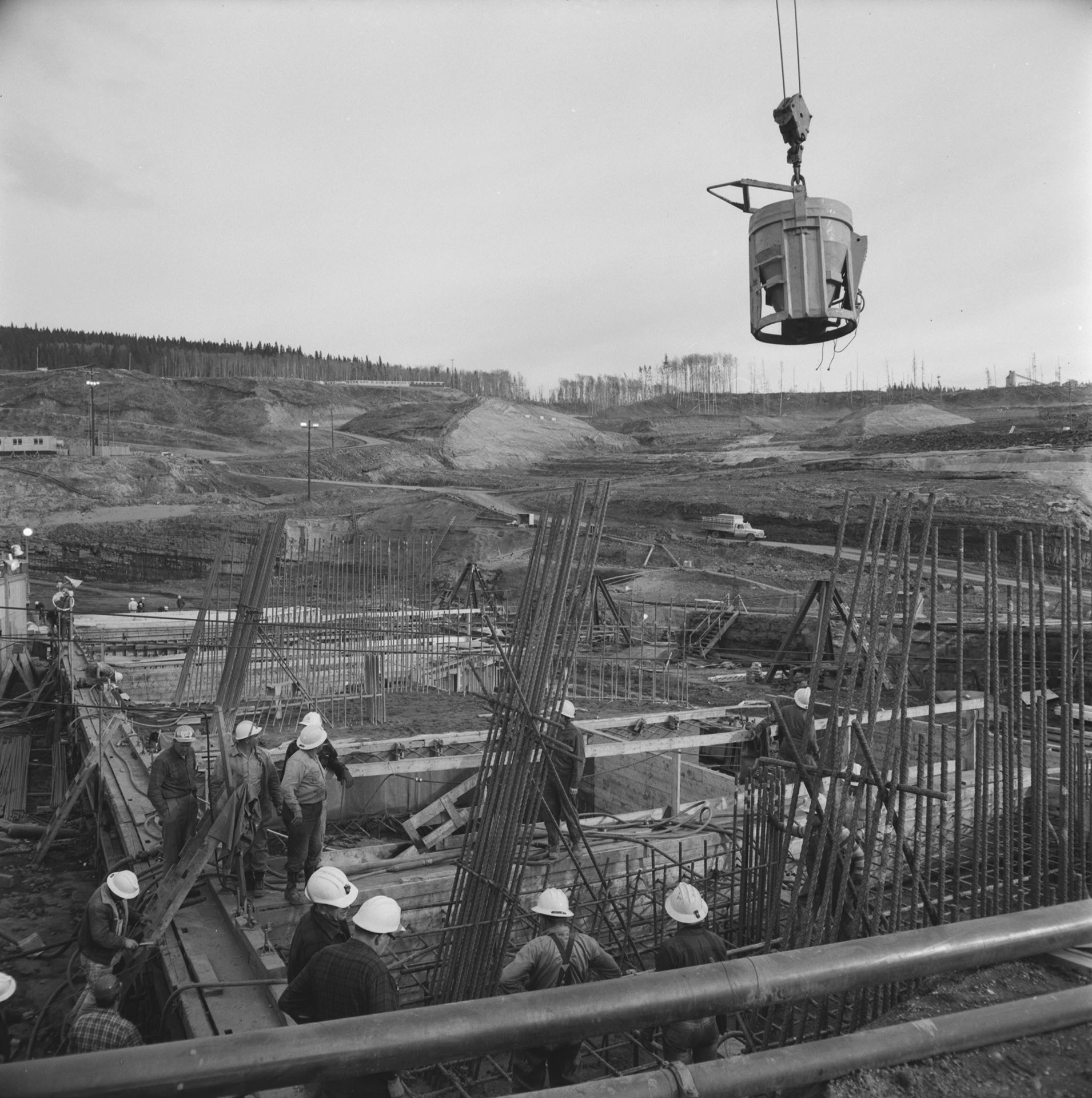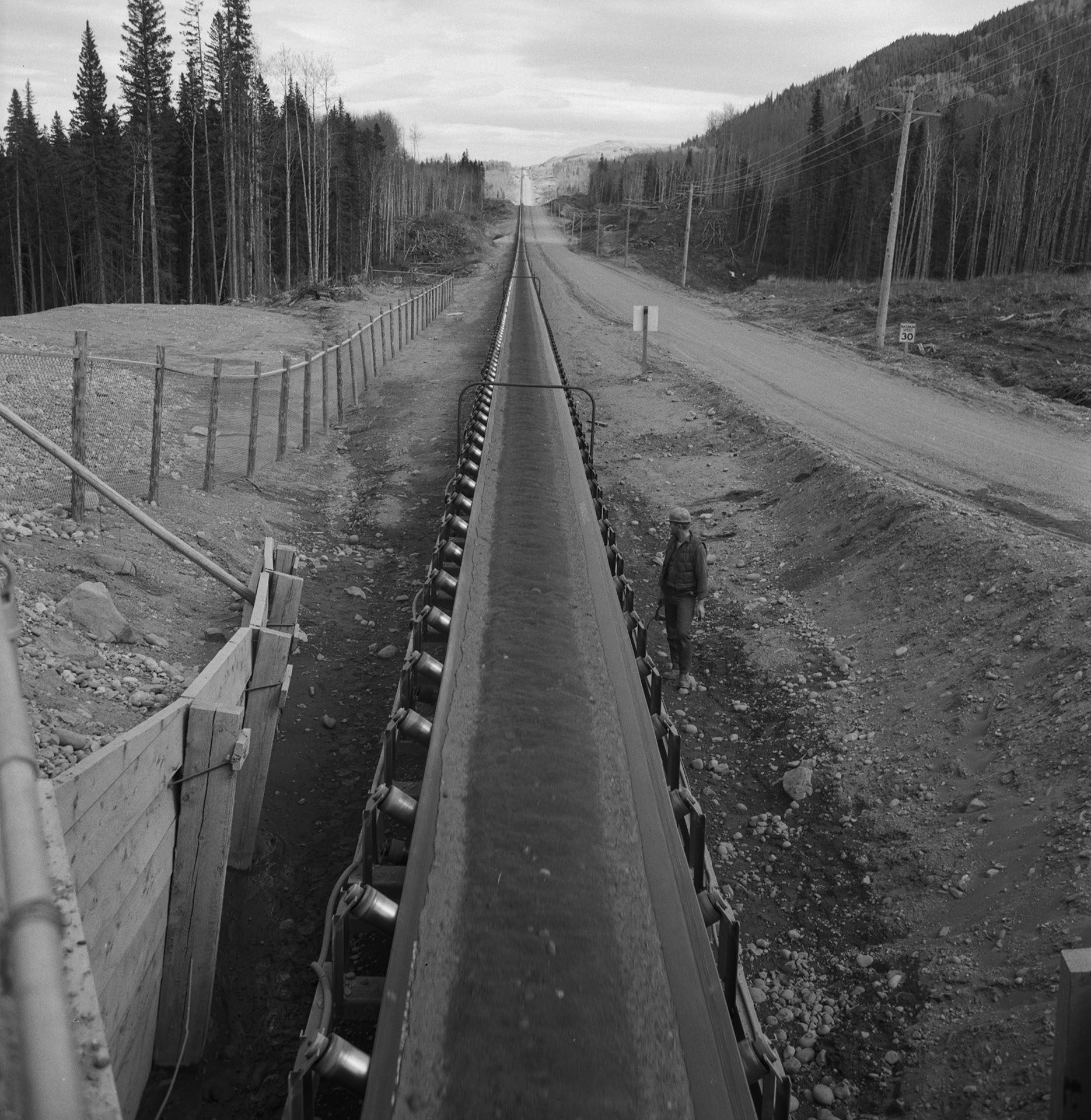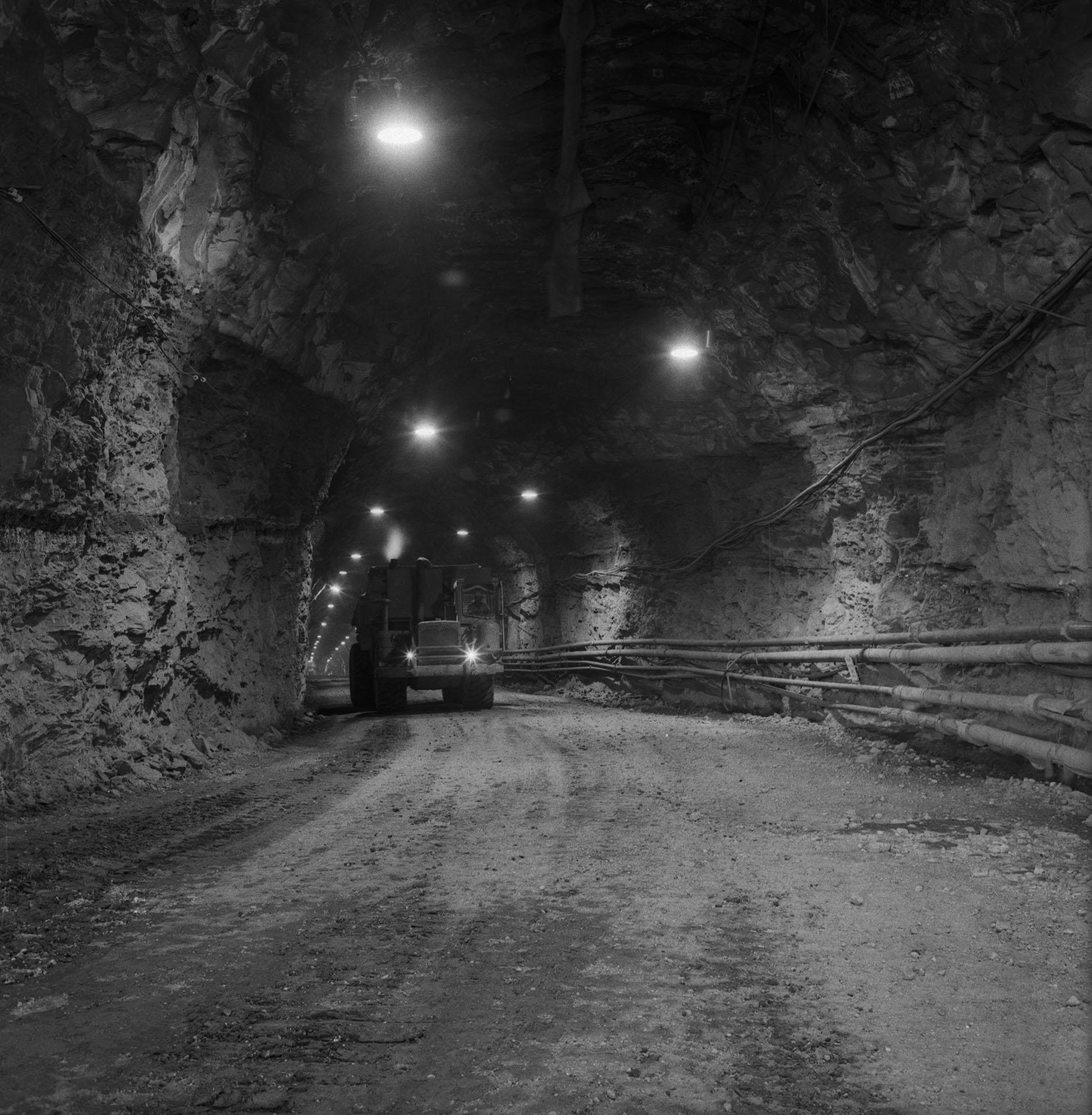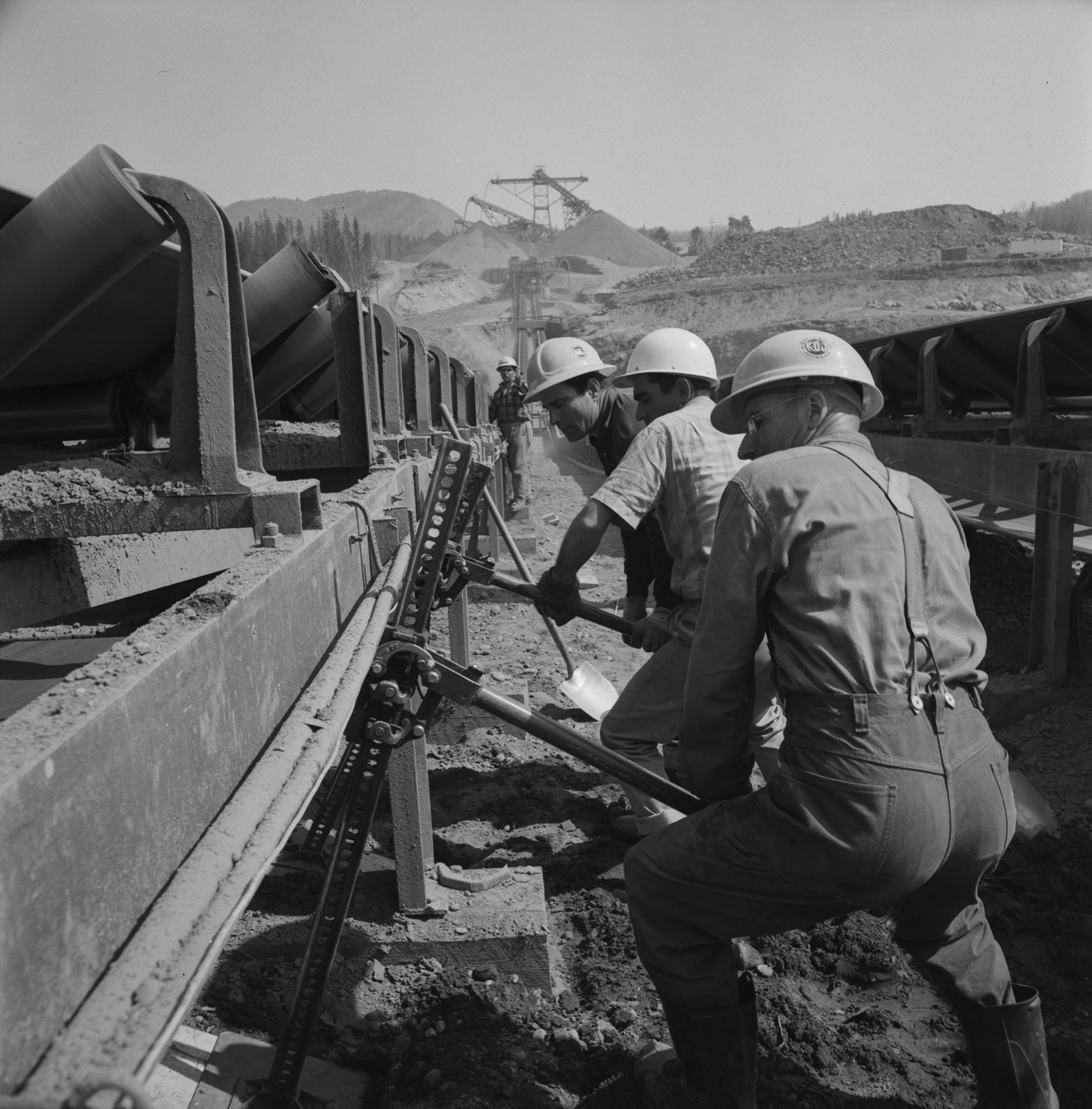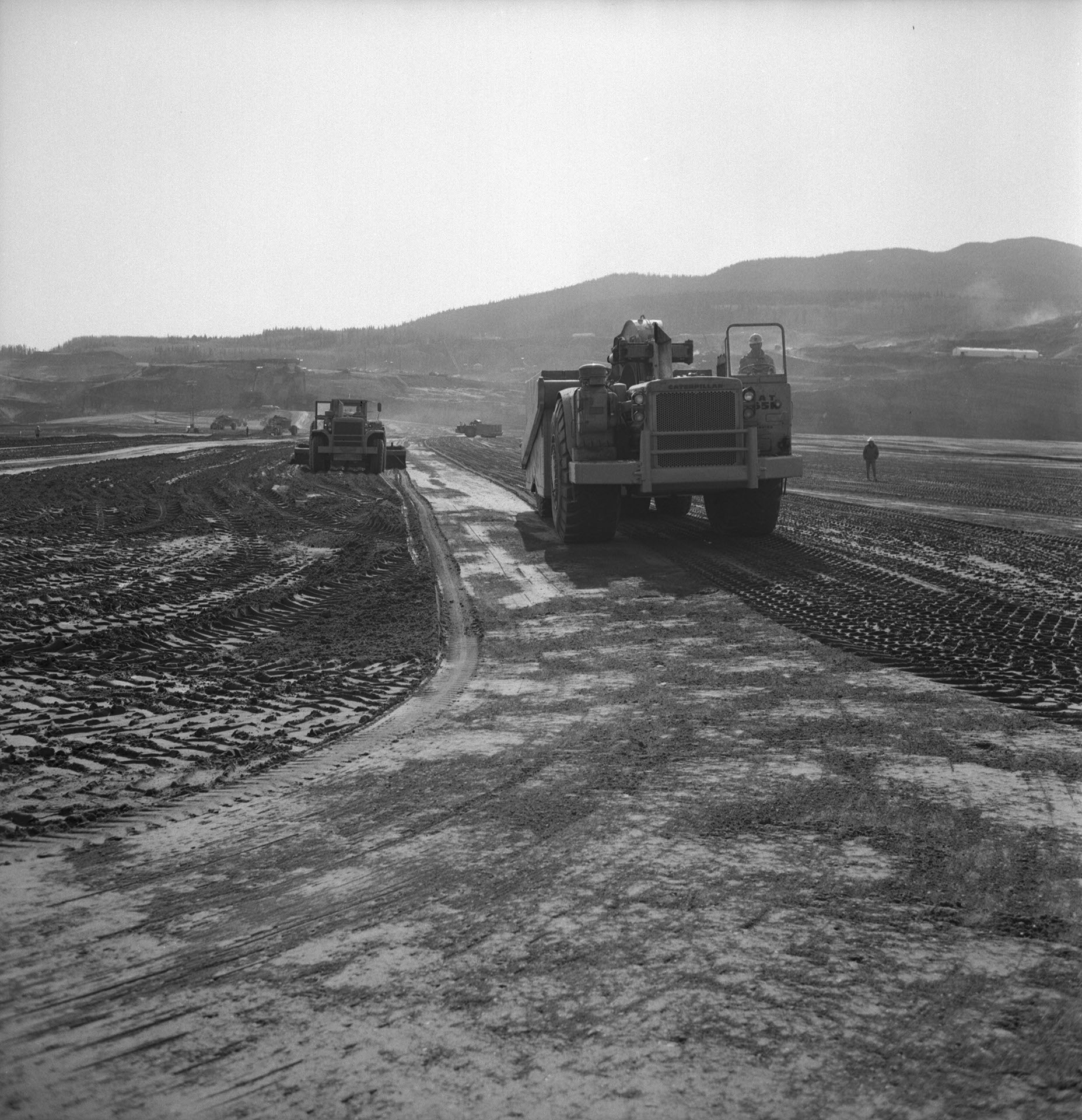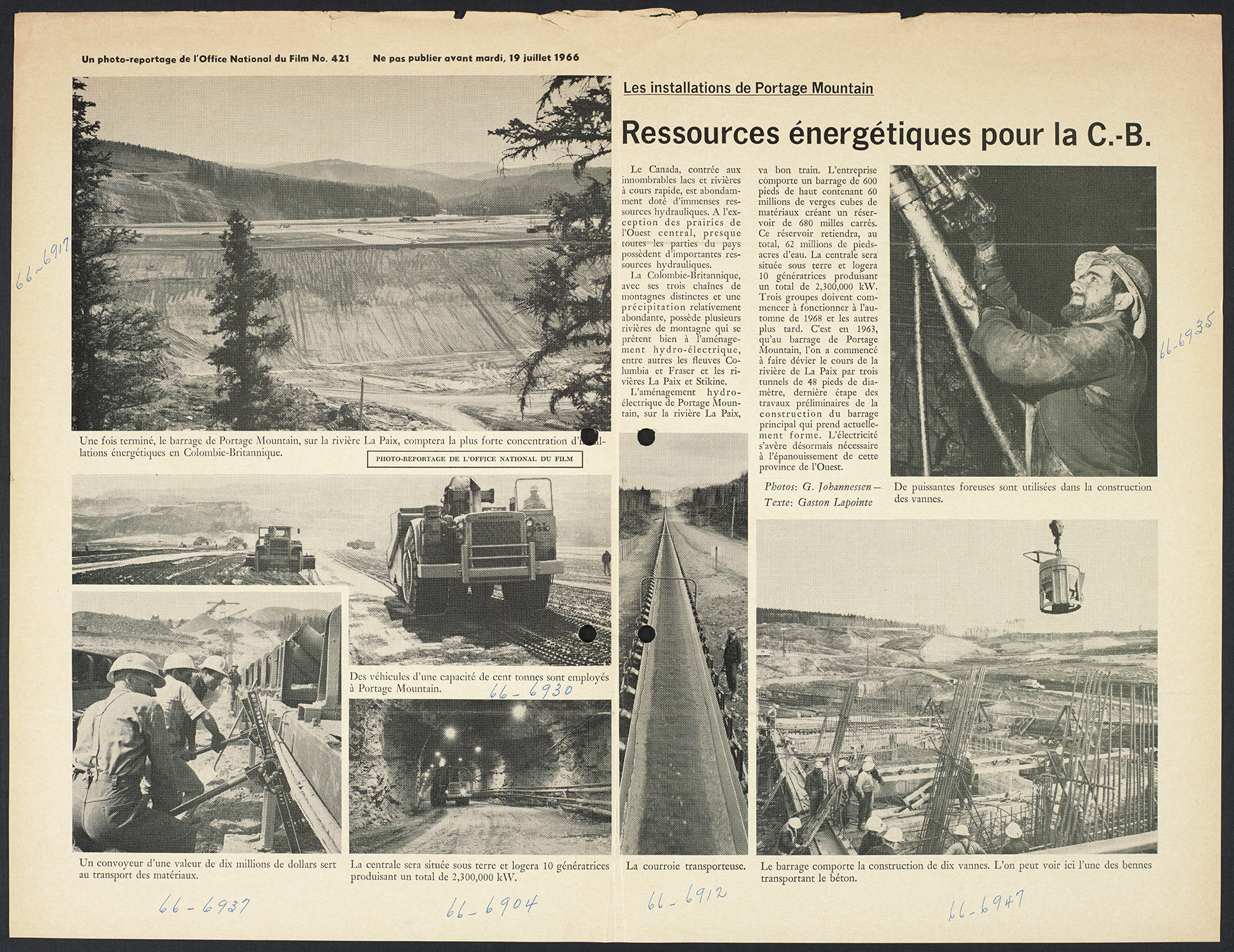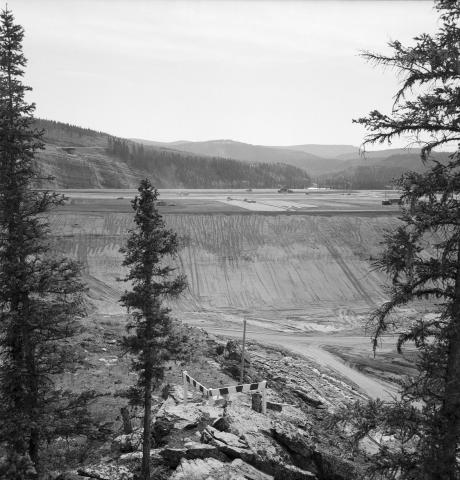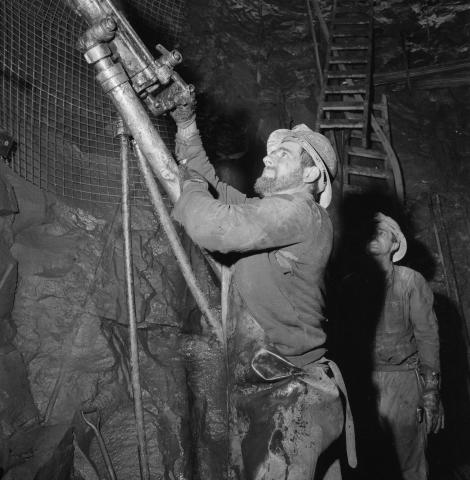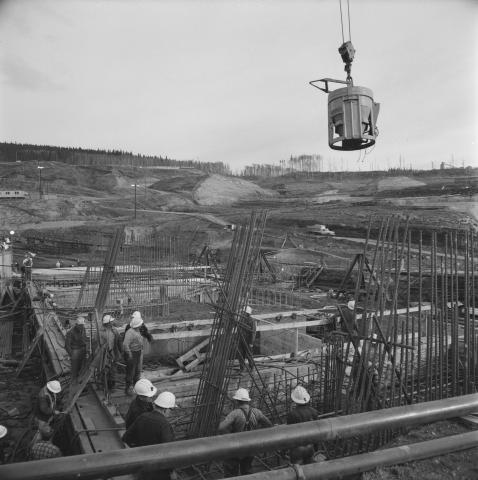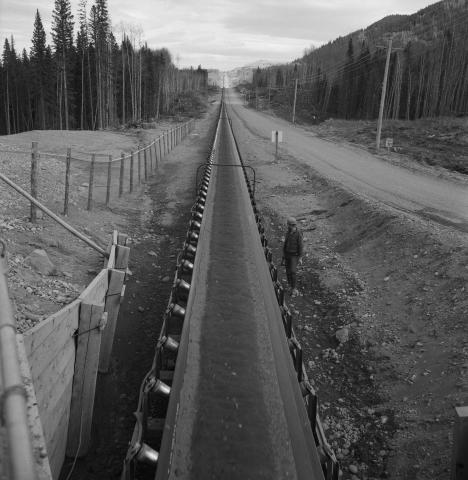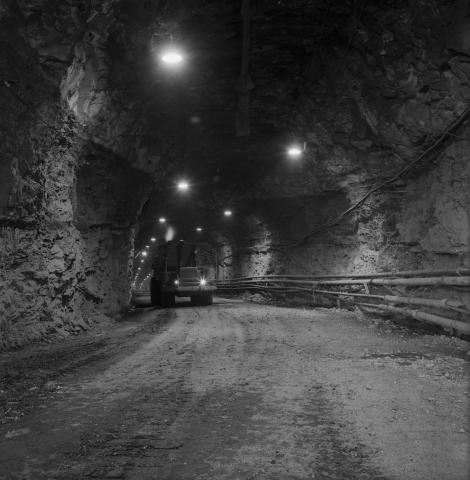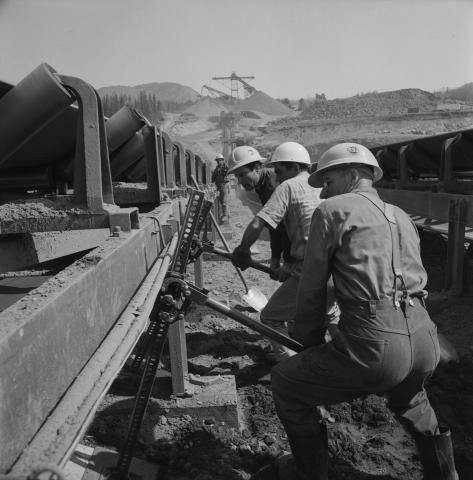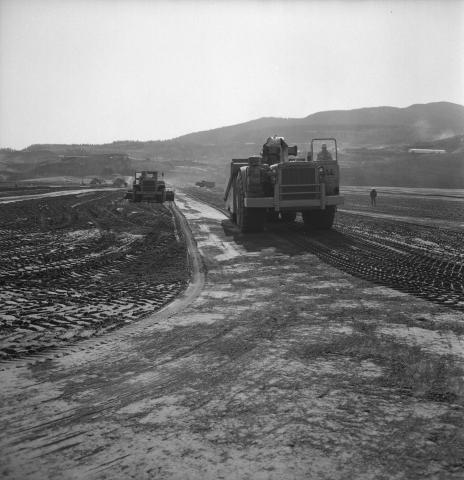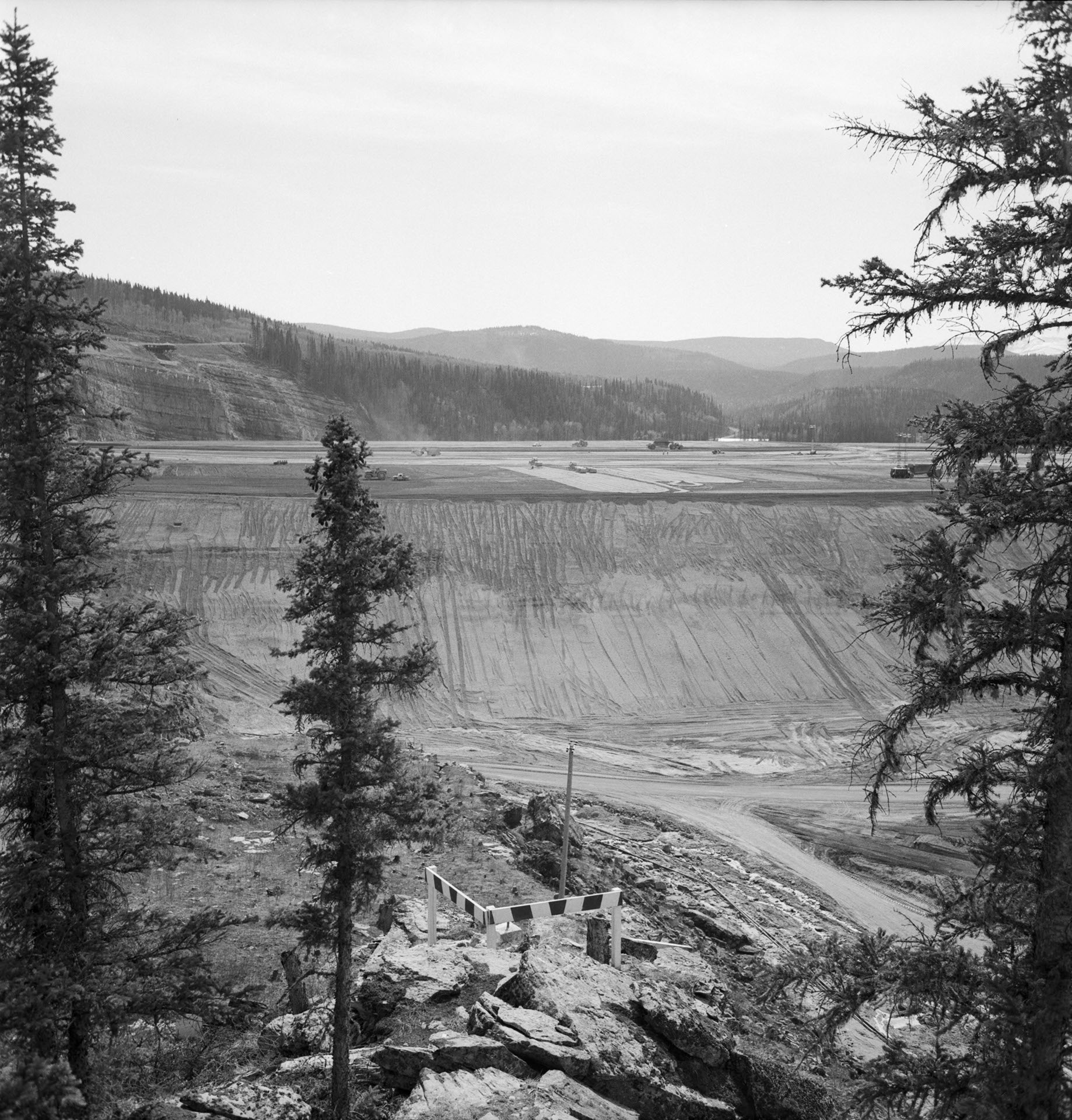
Photostory #421: In Canada: The Portage Mountain Dam, British Columbia: Power From the Peace
Photographers
Maker
National Film Board of Canada
Release Date
July 19, 1966
Collection
CMCP fonds
Credit Line
Canadian Museum of Contemporary Photography fonds, National Gallery of Canada Library and Archives
Main Text
Solid evidence of the great sweep of development taking place across Canada are massive power projects to provide for the nation's vigorous future. In northern British Columbia one of the world's greatest hydro-electric engineering feats is taking shape as a 2,500-man work force builds a one-and-a-quarter-mile-long dam, a 2,300,000-kilowatt-capacity powerhouse and a 574-mile transmission line to the south. The Portage Mountain Dam began with the temporary re-routing of the Peace River by blasting a diversion channel from the river bank and drilling three 48-foot-diameter tunnels through 2,500 feet of solid rock to take the water downstream from the dam site. Later, the world's largest conveyor system and screening plant was built to bring the fill needed for the dam itself from a glacial deposit of gravel, sand and rock, four miles from the construction site. Today, fleets of bulldozers, earth movers and other heavy equipment and machinery are placing in position 60 million cubic yards of material that will rise to a height of 600 feet and create a 240-mile-long reservoir, covering 680 square miles - fed by a catchment area of 27,000 square miles. Completion of the dam in 1968 will see the closing of the diversion tunnels, commencement of a seven-year period for the reservoir to fill, and the beginning of a tremendous surge of new industrial power for Canada's bustling Pacific province.
Subjects:
Locations:

